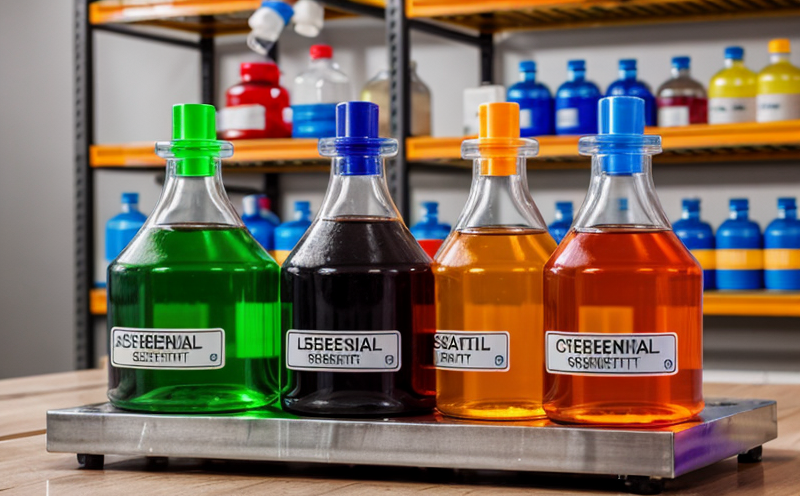Chemical Safety & Restricted Substances Testing
In today's global market, ensuring chemical safety and compliance with restricted substances regulations is critical. Consumer products are increasingly scrutinized for the potential risks associated with chemicals that may leach out or be present in higher concentrations than allowed by law.
Our comprehensive service covers a wide range of testing methods to identify and quantify hazardous materials in various consumer products, including textiles, electronics, furniture, and packaging. This includes volatile organic compounds (VOCs), phthalates, formaldehyde, heavy metals, and other harmful substances. By adhering to international standards such as ISO 14025:2017, ASTM D5983-14, and EN 16242, we ensure our results are reliable and repeatable.
Our testing process begins with a thorough examination of the product's chemical composition. This involves detailed analysis using advanced laboratory techniques such as gas chromatography-mass spectrometry (GC-MS), high-performance liquid chromatography (HPLC), and inductively coupled plasma mass spectrometry (ICP-MS). The specimens are prepared through precise sampling methods, ensuring that no critical components are omitted.
Once the samples are ready, they undergo rigorous testing to detect any restricted substances. This includes quantitative analysis of regulated chemicals within specified limits set by regulatory bodies such as REACH in Europe or TSCA in the U.S. Our team of experts interprets these results and provides actionable insights into necessary adjustments for product safety.
Our services extend beyond mere compliance; we also offer risk assessment reports that outline potential health impacts based on our findings. This proactive approach helps manufacturers anticipate issues before they arise, thereby protecting both their reputation and consumer trust.
To provide a clearer understanding of the breadth of this service, let us delve into some key aspects:
- Identification of restricted substances in various materials used in consumer products.
- Detection and quantification of hazardous chemicals through advanced analytical techniques.
- Evaluation of compliance with relevant regulatory standards globally.
- Provision of comprehensive reports detailing test results and recommendations for improvement.
Benefits
The benefits of our chemical safety & restricted substances testing service are numerous. For quality managers, it offers peace of mind knowing that your products meet strict regulatory requirements. Compliance officers can leverage this data to avoid costly recalls and fines. R&D engineers gain valuable insights into safer alternatives for future product development. Procurement teams benefit from verified supplier performance ensuring sustainable sourcing practices.
The service enhances brand reputation by demonstrating commitment to consumer safety and environmental responsibility. It supports continuous improvement initiatives aimed at reducing risk factors associated with chemical exposure. Additionally, it facilitates international market access through consistent quality assurance across diverse geographies.
Industry Applications
| Product Type | Relevant Standards |
|---|---|
| Textiles & Apparel | OEKO-TEX Standard 100, ISO 14972:2016 |
| Electronic Devices | RoHS Directive (EU), ASTM E2085-13 |
| Furniture & Home Decor | Certification Marks like Greenguard, SCS Indoor Advantage Gold |
| Packaging Materials | ASTM D886-15, TAPPI T492 om-03 |
Environmental and Sustainability Contributions
Our chemical safety testing contributes significantly to environmental sustainability by reducing the amount of hazardous waste generated from non-compliant products. By ensuring that all components adhere strictly to set limits, we help prevent pollution caused by improperly disposed-of goods.
- Promotes circular economy principles by encouraging reuse and recycling of compliant materials.
- Supports reduction in resource consumption through efficient use of safe ingredients.
- Aids in the development of greener products that contribute positively to global climate goals.





